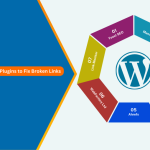SEO, or Search Engine Optimization, is the practice that fuels every individual’s digital use. However, merely practicing SEO to boost website rankings is never enough – practicing it correctly is essential too. The most difficult challenge SEO experts face is keeping up to date with the latest search engine algorithm updates.
12 SEO Mistakes
- Failing To Optimize Core Web Vitals
- Failing To Answer Search Intent Properly
- Ignoring Content Structure
- Targeting Wrong Keywords
- Ignoring UX Best Practices
- Poor Backlinking Strategies
- Weak Or Duplicate Content Present
- Keyword Stuffing
- No Google Search Console
- Default MetaData
- Ineffective Internal Linking
- Not Optimizing Images

See How Our Experts Can Drive More Traffic to Your Website!
SEO: Boost your rankings and drive more organic traffic today!
Website Design/Development: Create a stunning website that converts visitors into customers.
Paid Media: Reach the right audience at the right time with expertly managed paid media.
SEO has this level of personalization due to its ability to be tailored to specific users on the internet. Experts in the field continuously work to enhance their websites and applications and compete for the top spot on Google.
While I agree that most aspects of learning the trade happen by practicing it in real-world scenarios, in digital and content marketing, this technique can nosedive the project. As a marketing consultant myself, I’m positioned well in the industry to understand the most common errors small businesses make with SEO.
In this post, you will learn how to iron out your SEO strategies and avoid the most common pitfalls before you begin the process. I’ll highlight the 12 most common ones I’ve seen on the job and how you can steer clear of them.
1. Failing To Optimize Core Web Vitals
The core web vitals and website loading speed are important aspects of all good SEO practices. Slowdowns can occur due to a variety of reasons, but almost all of them can hamper user experience immensely. The most common reasons behind slow page speed are:
- Not optimizing image sizes
- Failing to check Core Web Vitals
- Having unused JavaScript and CSS
- Having render-blocking JavaScript
Google prefers faster sites with optimized core web vitals just as much as users do. It increases the user’s on-site presence and time and helps them navigate easier, and without unnecessary loading times and delays. Google introduced core web vitals in 2021 that emphasized site speed, yet most WordPress SEO experts consider this aspect an afterthought.
The issue is effortlessly remedied using GSC Page Experience and Google PageSpeed Insights. Google PageSpeed Insights is an excellent tool to perform site audits and identify where website slowdowns are occurring. You can also,
- Select the correct image size
- Compress larger image sizes
- Clean up redundant code
- Implement lazy loading
- Fix redirect chains and any broken links
2. Failing To Answer Search Intent Properly
Over the years, Google has implemented techniques like language processing models and BERT to accurately understand user issues. These issues pertain to specific queries.
Think of it this way, if you search for “best restaurants,” most of your SERPs will consist of reviewing blogs and YouTube videos that rank restaurants in any particular area. Searching for “restaurants discount” will provide search results about any promotions offered in your approximate geographical region. And searching for “restaurant near me” will zone into your accurate location and provide a map with the closest eatery options.
Search intent thus covers four roles:
- Informational – blog posts, for example: how to avoid common SEO mistakes in 2022 / how to find free social media posts.
- Commercial – are specific product reviews, for example, the best affiliate programs / best Korean restaurants.
- Transactional – are service or product pages, for example: buy KURU Footwear / eBay listing tool.
- Navigational – are specific landing pages or website access, for example, the Facebook login page / WordPress pricing page.
Ignoring search intent can cause you to waste entire resources and content on pages that will never rank high on SERP positions. This issue can be efficiently resolved by Googling specific queries and analyzing the search listings that come up.
3. Ignoring Content Structure
The on-page structure is important as it helps guide the reader when navigating the website easily and makes it simpler for search engines to understand the purpose of the specific page.
The two biggest mistakes when considering content structure are:
- Missing H1. The page title is always considered the H1 title. It gives Google crawlers and users a great understanding of the content displayed and the purpose of the page.
How to fix: Most issues occur when people confuse Title tags with H1 tags. Title tags are meta titles and show up on SERPs but not on the page. The H1 tag is the heading or topic people see when they land on the page.
- Heading placement is incorrect. The headings used on the page should accurately define the content hierarchy. Major sections should be titled H2, and subsections should be H3 and H4, and so on. Not incorporating this technique will not generate a proper table of contents, and confuse Google.
How to fix: Page indexing is a part of the Google algorithm which allows specific passages to rank on related queries. Your website misses out if the content structure is not well-defined. Ensure all headings are marked correctly and include relevant keywords in them.
4. Targeting Wrong Keywords
Conducting adequate keyword research is essential to maximize the reach of your web pages on search engines.
Avoid using generic, broad keywords with immense search volumes, like “Valentine’s Day lingerie” or “headphones”. There is very little chance that ranking these keywords will be successful and even if you manage to do so, the conversion rate of traffic won’t be impressive. Specific queries should be the primary focus as they’ll help with better ranking.
Another common mistake often made is targeting a massive range of keywords, even if they have no direct relevance to the website niche. It will dilute your topical focus and confuse Google about the purpose of your site.
Start with a keyword map for your website and then define topic clusters. For instance, if you’re a website design and development company that prioritizes websites only, create a keyword map around this. Picture all the information your visitors would require to select your company for the job and make an informed decision.
From here, branch this information into the main and supporting content pieces and ensure all of them have internal links to relevant product pages. Don’t be tempted to include custom software development keywords if that isn’t your industry niche.
5. Ignoring UX Best Practices
Human behavior is also factored in when Google determines SERP rankings. This can include behaviors such as session duration, bounce rate, and pages visited for website pages. It makes disregarding UX and website structure a common and big SEO mistake.
If visitors do not stick around your website for long, your SERP results will show that. Keeping these UX and site structure aspects in mind can help you create a more SEO-friendly website design:
- Use short and clean URLs- Incorporating best URL practices and having a healthy site structure are inseparable concepts. Ensure that users can adequately understand the page content by looking at the URL.
- Incorporate intuitive navigation- Users should be able to get where they want quickly and easily. Ensure that your website hierarchy isn’t broken with navigational links and that they make the user journey simple and intuitive. Using breadcrumbs to simplify backtracking is also recommended.
- Limit pop-ups and CTAs- We can all agree that capturing leads and monetizing as much traffic as possible is the goal for most people. However, excessive use of intrusive on-page elements can have the opposite effect and make users abandon the website.
6. Poor Backlinking Strategies
Backlinks are one of the most consequential factors in SEO. Content generating AI tools have improved, and websites have become more populated with content than ever. Thus, the importance of do-follow backlinks is expected to grow even more.
Try not to incorporate paid backlinks, as Google has been cracking down on low-quality backlinks since its Penguin Algorithm update in 2012. Paid backlinks may not seem like the most significant nuisance to you, but for Google, they’re a dealbreaker.
Instead of purchasing backlinks, follow these best backlinking practices:
- Offer writing guest posts in exchange for a backlink.
- Ask websites related to your niche to provide a link to your content or product.
- Perform lost backlink reclamation and spam link disavow regularly.
- Find the websites that have nofollow links to your site and encourage them to make these links do-follow.
- Have high-quality content that websites link to it organically.
Anchor texts and the timing of your backlinks also matter greatly. Having a lot of backlinks over a very short period on the same or similar anchor texts can force Google to flag your website down for supposedly buying backlinks. It will penalize your website and hurt your page SEO efforts.
7. Weak Or Duplicate Content Present
This problem is most common with eCommerce platforms and any Shopify SEO company would be familiar with it. Never push content for the sake of it.
If you have quality content that is perfectly optimized and provides no original solutions and little value for the users, your website may rank high for a week or two. But expect this ranking to disappear from search engine rankings too because Google will see that bounce rates are big and session durations short. Poor content also has the added disadvantage of dragging your website’s collective domain authority down, even if a few pages exhibit this problem. It includes any good pages you may have as well.
There can be times when duplicate content isn’t published on purpose and these pages can exist on your website because of how your CMS is set up. It is most commonly an issue plaguing any Shopify SEO company where the CMS generates duplicate product page links. These can easily be fixed using canonical tags and telling Google which one is your preferred version.
8. Keyword Stuffing
Not long ago, keyword stuffing was effective and considered a legitimate SEO marketing strategy for content creation and search engine visibility. Those times are gone. Inundating your webpage with long-tail keywords is a massive SEO mistake and can be detrimental to the ranking factor of your site.
Google is smart enough to understand the value of on-page content and it’ll hurt your chances of ranking high if you practice keyword stuffing. Google and other search engines even take metadata and backlink anchor text into account when calculating whether a page is guilty of keyword stuffing.
Keywords should be placed naturally and should provide value. They should be used with unique solutions and to explain the context that the readers need. Don’t hurt your metrics with random placements.
9. No Google Search Console
Google Analytics is the bread and butter of most WordPress SEO experts. It is even widely used in any Magento SEO service platform. But one tool most leave out is the Google Search Console and Bing Webmaster Tool. These tools are a great idea because they essentially tell search engines about the existence of your new website and make sure it gets crawled.
They can also help guide a lot of efforts by your Shopify SEO company as they provide Page Experience reports, indexing errors, and warnings. If you act on all of these analytics, you can quickly fix site health and functionality issues that could be hauling your entire website down.
10. Default MetaData
Meta tags may be short and invisible on pages, but this doesn’t mean that they can be ignored under good SEO practices. Any Magento SEO service knows the importance of optimized meta tags and their importance for your SEO strategy. Meta tags enable search engines to identify what your page is about and link the page to keywords that searchers use.
Optimized meta tags can also boost organic traffic. They are your one chance to convince potential customers that your page contains the information, products, or services they are looking for. Duplicate, default, or under-optimized meta texts are a massive mistake since you miss out on clicks from users who can’t comprehend what they will find on your page.
Also, ensure that the length of your meta texts is correct. Website builders and CMS automatically generate meta titles and these are most often H1. The problem with this is that the H1 is significantly longer than the recommended characters count.
If that occurs, only a part of it will show up, which can further hamper the ability of users to understand the purpose of your page. Here are some common meta tag mistakes that you can easily fix:
- Missing meta descriptions and titles
- No keywords
- Too many characters
- No selling points
- No action verbs
11. Ineffective Internal Linking
Link building is an important concept of SEO. There are two main types of internal links: navigational and contextual. Navigational links are ones you find in the website menu or footer, whereas contextual links are commonly seen in the text.
Contextual internal links set up with no purpose is a bad SEO practice. For instance, a website that specializes in matching resumes would not link to one that provides medical alert equipment. Most often, internal linking issues include:
- Orphan pages- Pages that do not have internal links. In these cases, Google and readers have a hard time finding these websites.
- Spam internal links- Misplaced or intentionally incorrectly placed links on anchor text that serve no purpose to the text of the page.
- Vague or empty anchor texts- Links on anchor texts that do not serve as the target or partial matches of your focus keyword. The article loses importance and can rank lower.
12. Not Optimizing Images
Most website design companies, like Digitarial, optimize images on the website but others do not. You’d be surprised how common this SEO mistake is, and it is a big one too. On image-heavy websites (especially for mobile devices), image optimization is vital.
Images that are too heavy for the web affect site loading and performance. It is also why social media websites like Instagram and Facebook incorporate image compression algorithms whenever a photo is uploaded.
It can be frustrating to compress images manually which is why it is often overlooked by site owners. Choosing the right image format (WebP, JPEG, or PNG) can save time and drastically cut down file sizes too.
Most site owners also make a common image SEO mistake of not writing optimized titles and alt tags. Ranking on Google is important, but ranking high on Google Images is important too. Using keywords and making alt texts descriptive can help searchers and Google bots locate you easily.
Conclusion
So there you have it…
SEO is an important factor in website ranking and maintenance. Simple mistakes like the ones listed above can drastically hamper your efforts and launch your domain in a downward spiral on all search engine rankings. Choosing a reliable SEO provider near you can make a significant difference in your online visibility and success.
Knowing which mistakes to avoid is a crucial part of every SEO strategy and I hope with my recommendations, you can implement a successful digital marketing roadmap. Contact us for more insights on digital marketing best practices, and the latest in the website and mobile app development domain.






